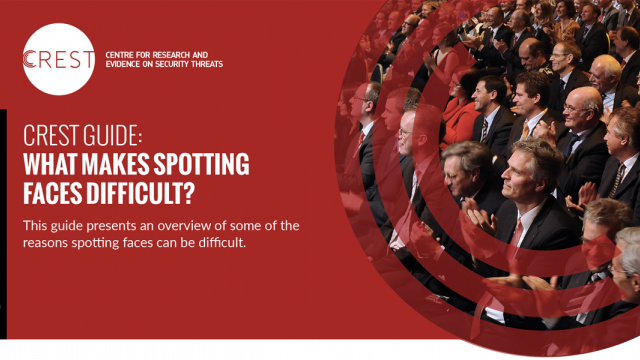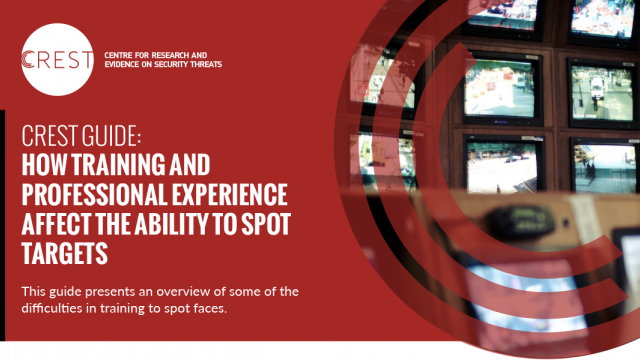Deployed informants are a vital tactic for law enforcement and intelligence agencies to identify and manage threats. Accurately identifying an informant’s motivations for providing information enables informant handlers to better influence the informant’s behaviour and reduce risks. In this article, Drs Ian Stanier and Jordan Nunan outline their mnemonic-driven framework.
Why offer a mnemonic to informant handlers?
Mnemonics offer a strategy for learning by aiding the retention of important concepts. In doing so, they can help structure the analysis of complex information. Where the risky operating arena is fast-moving, such as when handling informants, mnemonics can reduce an officer’s cognitive load of an already complex task.
This mnemonic aids the identification and diversity of informant motivation. It can be applied to improve an informant handler’s awareness of the complexity of an informant’s motivations, helping them to assess the types of motivations of potentially new informants and those in a continuing authorised relationship.
Building on existing mnemonics (e.g. MICE: Money, Ideology, Coercion, and Ego), the FIREPLACES framework highlights a broader scope of informants’ motivations and acknowledges that motivation is not a fixed or singular concept. It explores the multidimensional nature of motivation and aims to promote the opportunities and identify the risks behind an informant providing information.
The FIREPLACES framework not only increases the probability of identifying motives but can also enhance control, efficacy, and longevity of authorised relationships; potentially increasing ethical intelligence elicitation.
The evidence base
The range of motivations at play can be evidenced from a series of autobiographies and biographies of informants detailing their involvement in intelligence collection across both crime and terrorism fields.
Further affirmation on the diversity of motivations is drawn from research exploring the motivations recorded on informant source referrals submitted to Dedicated Source Units. This contemporary research challenged the narrower original MICE framework for the motivations of informants.
The FIREPLACES framework not only increases the probability of identifying motives but can also enhance control, efficacy, and longevity of authorised relationships; potentially increasing ethical intelligence elicitation.
Additionally, research is underway exploring the United Kingdom’s (UK) Domestic Extremism (DE) informants on their self-declared and informant handler assessed motivations for existing authorised DE informants. This has found that informants tend to hold a primary motivation for disclosing intelligence, although the majority also have secondary motivations for informing.
The data also supports earlier research that the motivation of informants is changeable during the period of the authorised relationship. The UK DE informant motivation research did not identify all forms of motivation within the framework (e.g. Coercion). However, the literature suggests that coercion has been a practice adopted by other countries so it was included to generate a framework that can be applied internationally.
Understanding motivation and its applicability to informant handling
By gathering information about an informant’s ambitions, fears, pursuits, morals, and perspectives, informant handlers can gain a greater insight into the informant’s motivations. There are two key aspects of motivation:
- Nature and direction of motivation – the reasons and decisions to act.
- Magnitude of motivation – the commitment to pursuing an act.
Informant handlers must not only discover the type of motivation(s) but also the strength of the motivator(s).
Informant handlers must not only discover the type of motivation(s) but also the strength of the motivator(s).
The FIREPLACES framework aims to assist the decision-making of law enforcement and intelligence agencies. The law concerning informant authorisation requires both regular reviews, and where appropriate, renewals of an informant’s authority. The review process provides informant handlers with an opportunity to revisit the informant’s motivations which may have evolved across singular or multiple motivations. This necessitates an examination of the informant’s tasking activity, their general behaviour and demeanour, and the interrogation of open and closed datasets. All of these are explored to identify new and emerging risks alongside operational opportunities.
Understanding motivation also strengthens relationships. The cultivation of potential new informants and maintenance of existing relationships relies heavily on the application of rapport-building techniques. The identification of rapport-building ‘hooks’ (e.g. motivations, personal interests, and lifestyle characteristics) may influence cooperation. Within the context of HUMINT, rapport can be defined as ‘developing and maintaining a working relationship with a human source by managing their motivations and welfare, while ensuring they understand the purpose of the relationship to secure reliable intelligence’. Furthermore, by identifying an informant’s motivations, an informant handler can use this to their advantage by developing common ground to generate conversational topics that may elicit intelligence.
The benefits of identifying both the nature and extent of an informant’s motivations include enhanced control over their activities and identifying and managing their vulnerabilities – ensuring safer future tasking deployments. Identifying an informant’s motivations also helps ascertain the limits of their cooperation, the longevity of the relationship, and the potential for informant misconduct.
Accurate assessment of an informant’s motivations for collecting and disclosing intelligence to their handlers supports the process for managing potential risks associated with subsequent deployments. For example, the identification of a potential motivation of revenge, while not in itself a barrier to recruitment, introduces elements of abundant caution into the informant-handler operational relationship.
It may generate additional cross-checking of the intelligence, more detailed questioning of the source, and further verification of answers centred on the provenance of the original information. This, in turn, assists with efforts to reduce, avoid, remove, or transfer identified risks.
The FIREPLACES framework is summarised in the table below.
FIREPLACES | |
F | Financial: Includes the receipt of monetary reward or in-kind payment (i.e. payment of rent, tools, vehicles, phones, clothes). |
I | Ideology / Moral: Information is provided about a person or group who possess ideas or beliefs at odds with those held by the informant (i.e. drug dealing or terrorist tactics). |
R | Revenge: Information is provided to harm or place another in a detrimental position (i.e. arrested) in response to a previous injury or perceived wrongdoing (i.e. as a result of an acrimonious breakup of a personal or criminal relationship). |
E | Excitement: Undertaking the role of an informant offers the individual a feeling of excitement, eagerness, or arousal. |
P | Protection: Passing information to authorities to protect the informant from persons or networks threatening them, their criminal enterprises, or their family. The cooperation aims to provide information that encourages police action to diminish this threat. |
L | Lifestyle: The role played by the informant provides the individual with an enhanced lifestyle, either as a consequence of deployments and/or payments. |
A | Access: The informant relationship provides an opportunity for counter-penetration to identify agency interest in offending networks and associates. This may include deliberate infiltration by criminals to understand the nature of police tasking and levels of interest in their or their competitor’s criminal enterprises. |
C | Coercion: Information is provided to avoid carrying out a threat made by an official (i.e. the threat of deportation; being prevented access to or from a country; or blackmail after being caught in compromising situations). |
E | Ego: Undertaking the role of an informant enhances the individual's self-esteem or self-importance. Where this ego starts to impact the veracity of provided information, these are sometimes colloquially known as ‘Walter-Mitty’ informants. |
S | Sentence: Information is shared to mitigate the length of a likely forthcoming prison sentence or release from detention. |
Read more
A guide to the framework is available too, (see downloads) which is aimed at handlers.
- Nunan, J., et al (2020). The impact of rapport on intelligence yield: police source handler telephone interactions with covert human intelligence sources. Psychiatry, Psychology and Law, 1-19. Available at: tinyurl.com/5yeshjjc
- Stanier, I., & Nunan, J. (2018). Reframing intelligence interviews: The applicability of psychological research to HUMINT elicitation. In The Psychology of Criminal Investigation, 226-248. Routledge.
- Stanier, I., & Nunan, J. (2021). The impact of COVID-19 on UK informant use and management. Policing and Society, 1-18. Available at: tinyurl.com/wyfn27up
Copyright Information
As part of CREST’s commitment to open access research, this text is available under a Creative Commons BY-NC-SA 4.0 licence. Please refer to our Copyright page for full details.
IMAGE CREDITS: Copyright ©2024 R. Stevens / CREST (CC BY-SA 4.0)







